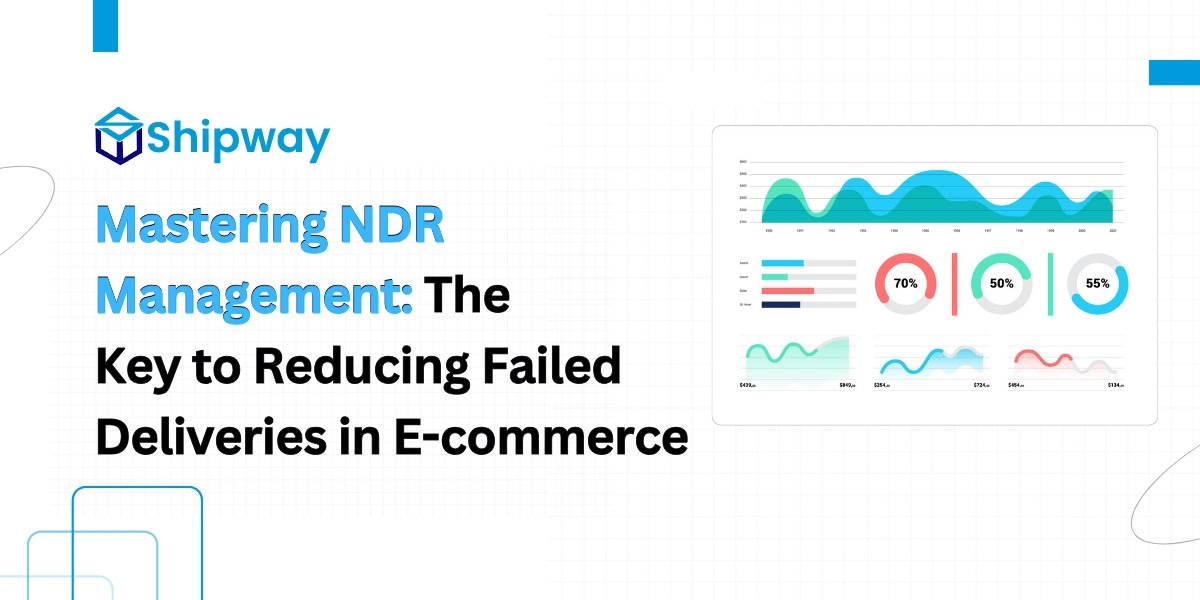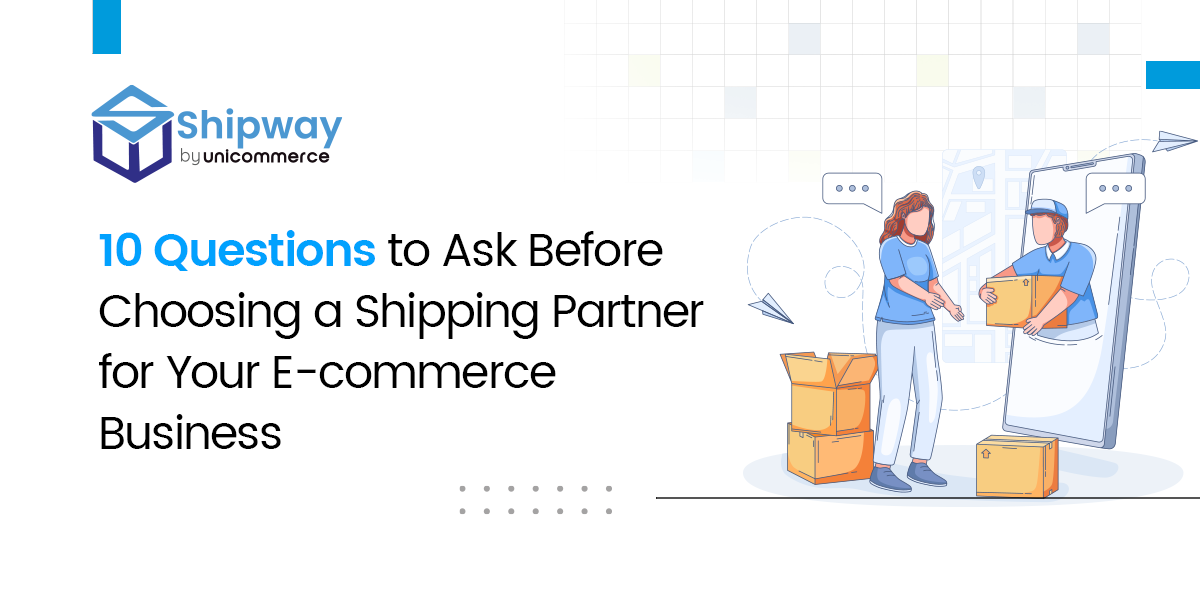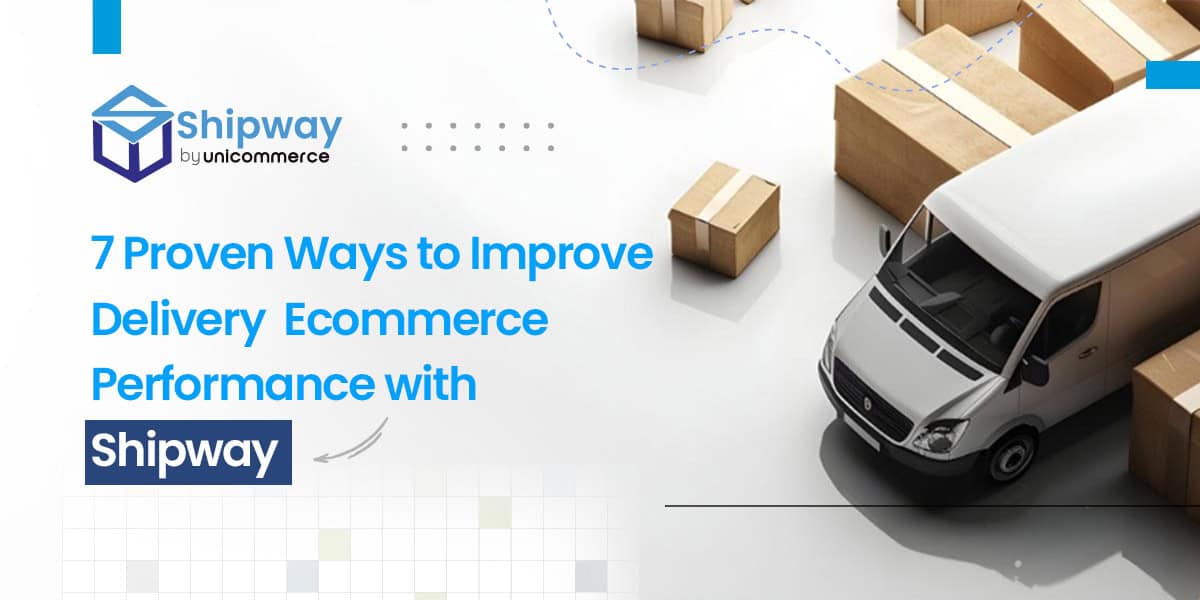What is NDR or Non-Delivery Report?
In the Indian eCommerce market, NDR is also known as Non-Delivery Report and it is a common occurrence that implies failed delivery attempts. This simply means that when a delivery fails, eCommerce businesses have a limited timeframe to convert that failure into a successful delivery.
If unsuccessful, the failed delivery is marked as RTO, or Return to Origin. This means that the order is canceled and it must be shipped back to the origin warehouse.
This process incurs significant losses for eCommerce companies, as the ecommerce brands have to pay for both the forward and reverse logistics costs. NDRs also contribute substantially to the overall RTO percentage, which can affect an ecommerce brand’s image and also lead to poor customer satisfaction. However, effective NDR management can reduce these losses, let’s discuss this in detail in this article.
What Does NDR Mean for an eCommerce Brand?
An NDR indicates the status of an order after an initial delivery attempt has failed. When a delivery fails for any reason, the carrier partner marks the order as an NDR. E-commerce enterprises monitor the flagged NDR orders to convert them into successful deliveries and avoid RTOs.
Carriers typically make 2-3 delivery attempts before marking the order as an RTO. NDRs can disappoint customers and lead to a greater loss for the company, including the loss of a sale, forward shipping charges, and challenges in returning the order to the origin warehouse for resale.
Benefits of NDR Management for eCommerce Businesses
NDR management involves promptly handling non-delivery reports (NDRs) to ensure future successful deliveries. Establishing a clear and stable workflow for managing NDRs offers multiple benefits beyond preventing delivery failures.
An efficient NDR management system can significantly enhance your eCommerce business by improving overall shipping operations and addressing complex aspects of the delivery process.
Here are just a few of the immediate benefits you’ll gain by employing effective NDR management techniques:
1. Slash Your RTO Rate by 50%
High NDR rates significantly contribute to high Return to Origin percentages, as many NDRs end up as RTOs instead of getting successfully delivered. Effective communication and proactive NDR management can drastically reduce the number of NDRs converting into RTOs, cutting the RTO rate by half.
2. Eliminate Fake Delivery Attempts
NDR management requires detailed information on the reasons for delivery failures, making identifying and tracking fake deliveries easier. By consistently tracking and addressing fake delivery attempts, businesses can significantly reduce NDR occurrences and improve overall delivery reliability.
3. Keep Customers Informed
Customers dislike delayed deliveries, but they dislike being uninformed even more. Effective NDR handling involves reaching out to customers for information, ensuring they are updated and aware that their order is being worked on. This transparency helps maintain customer trust and satisfaction.
4. Optimize Last Mile Delivery Operations
Last-mile delivery is prone to mix-ups and exceptions, contributing to high RTO rates and poor customer experiences. By analyzing NDR occurrences and their causes, eCommerce brands can identify and implement solutions to common issues in last-mile delivery operations, improving overall efficiency.
5. Boost Ecommerce Order Fulfillment
The ultimate benefit of NDR management is increased order fulfillment. Ensuring a higher number of successful deliveries boosts order fulfillment rates, contributing to the growth and profitability of eCommerce ventures.
How Does NDR Management Work for the Indian eCommerce Market?
Now that we understand the requirements and benefits of NDR management, it’s clear how it can help eCommerce businesses better handle customer orders and drive online growth.
Here’s a step-by-step guide to implementing effective NDR management in the Indian eCommerce market, ensuring your business thrives by improving delivery success and customer satisfaction.
1. Stay Alert with NDR Notifications
Carriers typically send daily reports of NDR notifications at the end of each day. These reports inform you about which deliveries failed and in which areas, enabling you to take appropriate action.
2. Uncover the Cause
Each NDR notification should ideally include the reason for the failed delivery. Understanding the cause helps determine if the NDR can be resolved and what steps are necessary to address it.
3. Communicate with Customers
Once the cause of the NDR is identified, communicate with the customer to gather the necessary information for successful delivery. This may involve obtaining a contact number, address details, or alternate delivery timings.
4. Update Carrier Information
After receiving the information from the customer, relay this updated information to the respective carrier. This allows the delivery agent to make the next delivery attempt with accurate and relevant details.
5. Follow-Up Diligently
In eCommerce delivery, there are certain instances when even after the second or third attempt, the delivery fails.
By consistently following up after each delivery attempt, you can ensure that any remaining issues are addressed promptly, improving the chances of successful delivery on the next delivery attempt.
This makes it important to follow up with both the customers and the courier partners after every failed attempt. This helps you note the reason for each failed attempt and work with the customers to fix these issues for the next attempt.
E-commerce businesses can effectively manage NDRs, reduce RTO rates and improve overall delivery success with these steps.
How Shipping Solutions Improve NDR Management?
NDR management may seem straightforward at first glance, but it quickly becomes complex and challenging. Deciding which NDRs to prioritize and coordinating necessary actions can become overwhelming after multiple NDR failures.
This is where a NDR management solution proves invaluable. NDR management software simplifies the entire process by automating various tasks that were previously manual.
The primary goal of shipping software in NDR management is to speed up the process and handle NDRs efficiently, preventing them from becoming RTO. By leveraging new logistics solutions, businesses can streamline NDR management, enhance delivery success rates, and boost customer satisfaction.
1. Track NDRs in Real-Time
Shipping software leverages API integrations to accelerate the receipt of tracking updates. Effective shipping software uses both push and pull APIs to ensure notifications are received promptly. This allows you to receive NDR notifications as soon as your carriers do, rather than in bulk at the end of each day.
2. Allocate NDR by Cause
Identifying the cause of an NDR is crucial for managing it effectively. This process also helps in allocating NDRs to different teams for resolution. Shipping software uses complex AI-based algorithms to streamline this allocation process, quickly and efficiently identifying the most common causes for NDRs in your business.
Common Causes for NDRs:
- Wrong Delivery Address/Phone Number: When the customer provides incomplete or incorrect information, preventing the delivery.
- Fake Delivery Attempt: When the delivery agent marks the delivery as failed without attempting it.
- Customer Rescheduled: When the customer requests a later delivery date and time.
- Customer Unavailable/Unreachable: When the customer cannot be found or take possession of the order at the time of delivery.
- Customer Rejected Delivery: When the customer refuses the order, possibly due to damage, inability to pay, or a change of mind.
3. Simplify NDR Workflows
A significant advantage of shipping software with NDR management capabilities is its ability to guide the creation and implementation of an efficient NDR management workflow. Through AI, automation, and machine learning, it simplifies the process of responding to NDRs, requiring minimal effort from your business.
4. Speed Up Customer Response
Timely communication with customers is crucial. When an NDR notification is received, the faster you reach out to the customer for the necessary information, the sooner they know you are working to resolve their issue. An ecommerce shipping software automates this process, quickly reaching out to customers based on the identified NDR cause.
5. Automate Follow-Ups
Following up after each failed delivery is vital to prevent customers from abandoning their orders. Managing multiple follow-ups can be challenging when handling numerous NDRs. Shipping software can automate customer follow-ups, saving time and ensuring continuous operations without disruptions.
How Shipway’s NDR Management Optimizes Last Mile Delivery for Indian eCommerce Brands
Last-mile delivery exceptions present a significant challenge in the Indian eCommerce market, making effective NDR management crucial for success. As eCommerce businesses expand, the volume of NDRs can increase, potentially impacting your business growth. Implementing a well-defined NDR workflow is essential, but optimizing this workflow requires efficient shipping software with advanced NDR management dashboards.
Shipway offers an ideal shipping solution, combining automation with personalized interaction to ensure customer satisfaction and keep RTO numbers low. With Shipway’s centralized dashboard, managing undelivered orders becomes streamlined, and handling re-attempt requests from customers is more efficient than ever.
Key NDR Management Features in Shipway:
- Centralized Dashboard: Effortlessly manage undelivered orders.
- Re-attempt Handling: Efficiently process customer requests for delivery re-attempts.
- Flexible Scheduling: Choose re-attempt dates, times, and addresses within the same pincode area.
- Customer Communication: Gather delivery re-attempt responses via manual calls, automated SMS, email, and WhatsApp notifications.
- Automated Coordination: Automatically forward customer responses to courier partners.
- NDR Analysis: Access comprehensive NDR analysis and reports.
With Shipway, the benefits are clear: reduce RTOs by up to 50%, enhance the customer experience, and improve last-mile delivery success rates. Using Shipway means optimizing your shipping operations and improving customer satisfaction, making it an indispensable shipping aggregation and automation solution for eCommerce businesses.
You may also like…
10 Questions to Ask Before Choosing a Shipping Partner for Your E-commerce Business
Top 10 Questions to Ask Before Choosing a Shipping Company Setting up an e-commerce business is only the first step. Long-term success depends on...
read more7 Proven Ways to Improve Delivery Ecommerce Performance with Shipway
Delivering products swiftly and reliably has become a decisive factor for winning and retaining customers in ecommerce delivery. Fast delivery...
read moreTop 10 Logistics Companies in India for eCommerce (2025 List & Guide)
India’s eCommerce sector is booming, projected to reach USD 200–220 billion by 2026, driving an urgent demand for reliable logistics solutions. For...
read more





